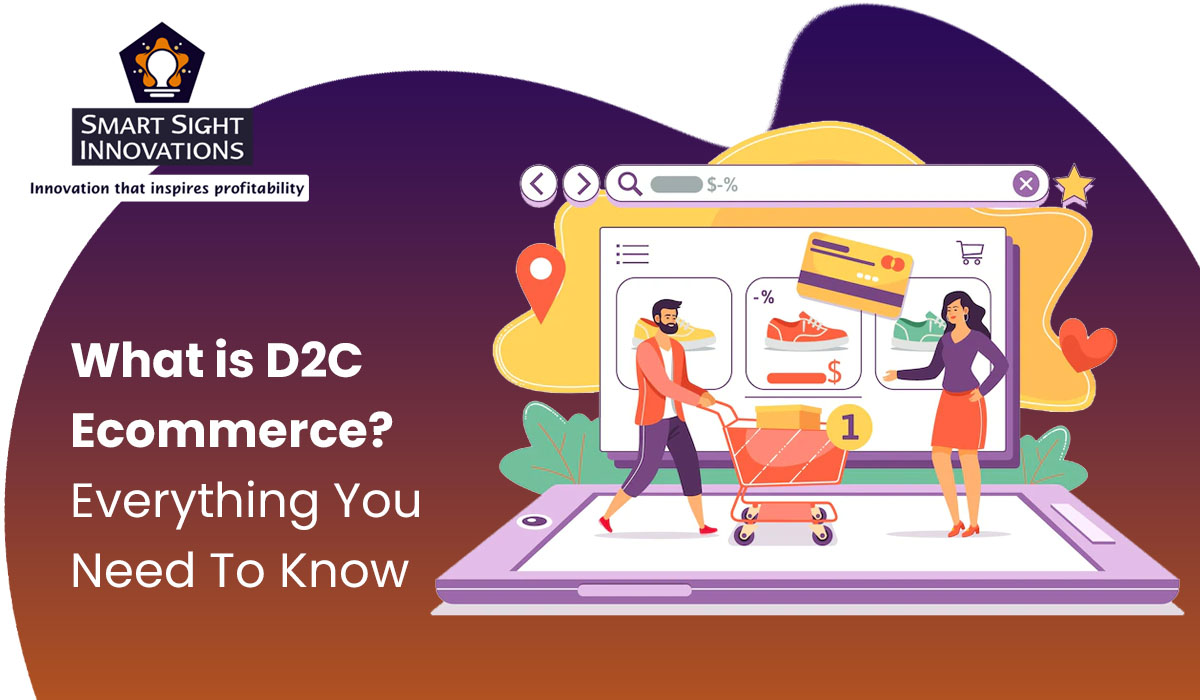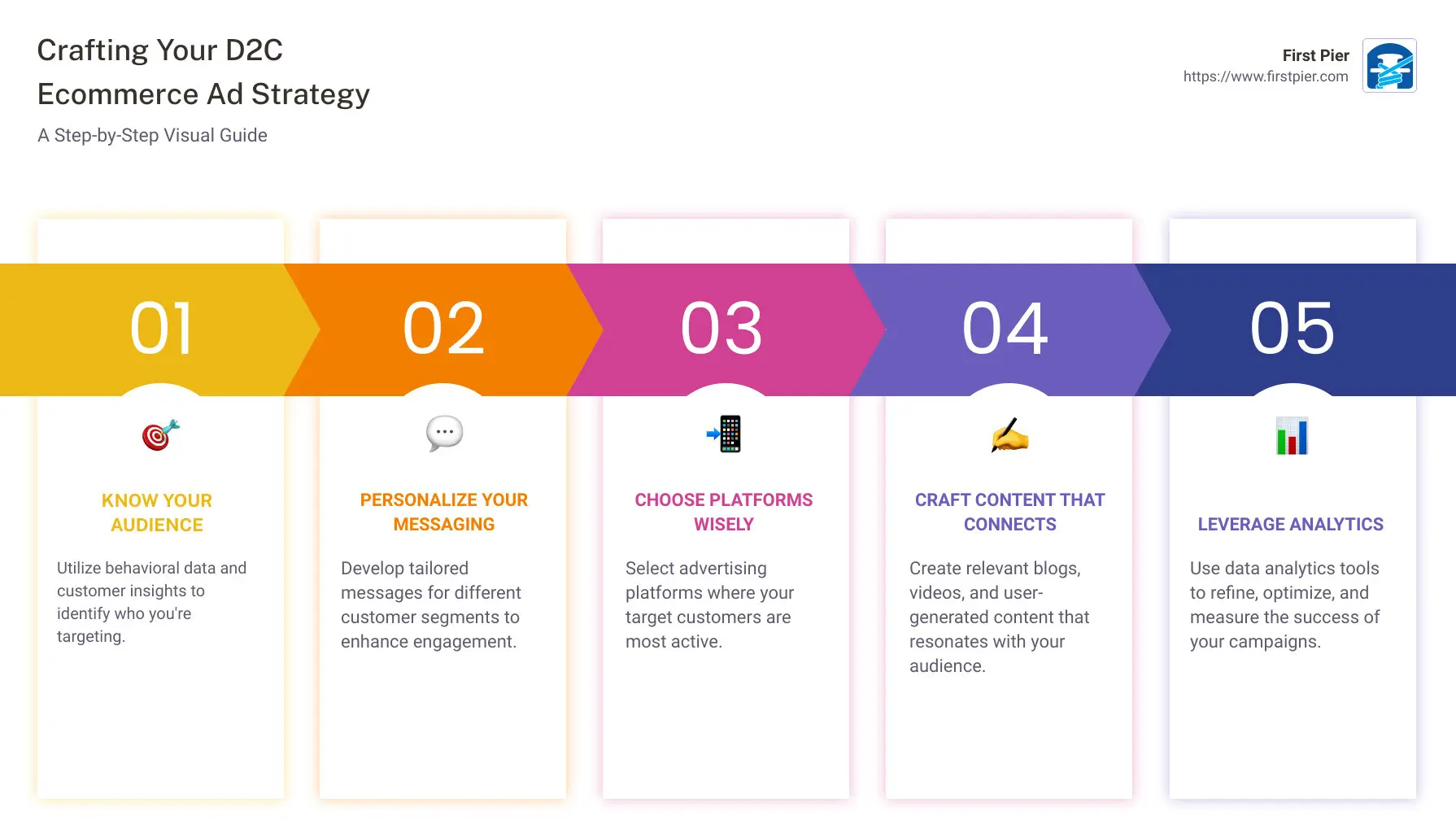Discovering the Possible of D2C Ecommerce: A Comprehensive Overview for Businesses
The D2C ecommerce model offers a considerable change in how brand names engage with customers. It makes it possible for business to bypass conventional retail channels, cultivating deeper links and possibly increased revenue margins. This approach is not without its complexities. Comprehending the nuances of D2C ecommerce is vital for brand names intending to prosper. What approaches can they take on to browse this evolving landscape efficiently? The answers might redefine their company approaches.
Recognizing the D2C Ecommerce Model

Key Advantages of D2C Ecommerce for Brands
The D2C ecommerce version uses brands substantial benefits, especially relating to boosted profit margins. By getting rid of middlemans, companies can preserve a larger share of sales profits. Furthermore, this direct partnership with clients fosters boosted brand name loyalty, encouraging repeat purchases and long-lasting interaction.
Increased Revenue Margins

Enhanced Brand Name Commitment
Structure on the economic advantages of D2C ecommerce, improved brand name loyalty emerges as one more crucial advantage for companies involving straight with customers. By developing a straight connection, brand names can foster much deeper relationships with their customers, getting understandings right into actions and preferences. This direct communication permits even more tailored marketing methods, which reverberate strongly with consumers. In addition, brands have the possibility to manage their messaging and customer experience, strengthening brand worths and building count on. When consumers really feel a personal connection, they are more most likely to return, support for the brand name, and join community interaction. Eventually, improved brand name loyalty not only drives repeat purchases however likewise grows a passionate customer base, additional strengthening a brand name's placement out there.
Obstacles Faced by D2C Brands
D2C brands come across numerous significant challenges that can influence their success. Supply monitoring issues can bring about stock shortages or excess, complicating operations and customer complete satisfaction. Additionally, marketing spending plan constraints typically limit the capacity to properly reach and involve target market.
Inventory Monitoring Issues
Effective inventory administration presents an awesome difficulty for several brand names operating in the direct-to-consumer (D2C) space. These brands usually face fluctuating demand, which can cause overstock or stockouts, eventually influencing customer fulfillment and earnings. Additionally, the absence of innovative stock monitoring systems can result in discrepancies between actual stock levels and reported data, complicating order fulfillment. The varied array of items D2C brands normally offer also makes complex supply monitoring, as variants in dimensions, designs, and shades require even more thorough oversight. Numerous D2C businesses may battle with minimal warehousing abilities, leading to ineffective use of area and sources. Effective supply management continues to be a vital difficulty for D2C brands intending for lasting growth and operational effectiveness.
Marketing Budget Constraints
Navigating advertising and marketing spending plan constraints is a substantial challenge for numerous direct-to-consumer (D2C) brand names. Restricted monetary resources commonly restrict these business' capacity to spend in comprehensive advertising and marketing approaches, causing reduced exposure in an open market. D2C brands regularly grapple with the demand to maximize roi (ROI) while targeting certain target markets successfully. This difficulty is worsened by increasing costs in digital advertising and marketing and the necessity to designate funds throughout multiple channels, consisting of social networks, search engines, and e-mail marketing. Consequently, numerous D2C brands must introduce cost-effective marketing services, leveraging organic growth methods and influencer collaborations. Eventually, successfully steering these budget constraints is vital for maintaining development and attaining long-lasting profitability in the progressing ecommerce landscape.
Strategies for Developing an Effective D2C Ecommerce Company
As customers progressively seek direct connections with brands, developing an effective D2C ecommerce service needs a strategic approach that prioritizes customer interaction and depend on. One reliable method is to produce engaging brand stories that resonate with target market, promoting psychological links. Utilizing social media sites platforms can improve exposure and assist in two-way communication, allowing brands to involve directly with customers.Moreover, personalized experiences with tailored advertising and marketing efforts can substantially enhance consumer retention and commitment. Implementing commitment programs and providing unique deals can additionally incentivize repeat purchases.Streamlining the acquiring process is crucial, making certain a straightforward user interface that boosts the buying experience. In addition, clear interaction relating to shipping and returns develops depend on and urges customer confidence.Finally, proactively looking for more info customer feedback and responding to it shows a dedication to renovation and consumer fulfillment, important components in the affordable D2C landscape.
Leveraging Innovation for Enhanced Customer Experience
In today's affordable D2C ecommerce landscape, modern technology plays a crucial role fit customer experiences. Companies progressively use sophisticated tools such as man-made knowledge, chatbots, and personalized formulas to enhance interactions and streamline the purchasing procedure. By integrating these innovations, brand names can give tailored product recommendations based on individual preferences and buying habits, fostering an extra appealing experience.Moreover, responsive internet site designs and mobile applications assure that customers can access solutions effortlessly across numerous gadgets. Enhanced settlement options, consisting of digital budgets and one-click checkouts, further simplify purchases, making it easier for consumers to make purchases.Data analytics additionally enables organizations to collect insights right into client behavior, enabling continual renovation of services and offerings. Overall, leveraging technology not just boosts consumer contentment however also grows loyalty, ultimately driving lasting success in the D2C ecommerce sector.
Marketing Techniques to Drive D2C Sales
Just how can brand names effectively catch the interest of consumers in a saturated market? To thrive in the direct-to-consumer (D2C) landscape, brands need to employ targeted advertising tactics. Making use of social media platforms, brands can involve customers through interactive material, influencer collaborations, and user-generated articles. Individualized e-mail campaigns can also cultivate a feeling of connection, using customized promotions based upon consumer actions and preferences.Moreover, narration plays a crucial duty in differentiating a brand's story, making it relatable and unforgettable. Brand names ought to invest in search engine optimization (SEARCH ENGINE OPTIMIZATION) to enhance presence, ensuring their items are conveniently visible online. Furthermore, leveraging data analytics permits companies to improve their advertising and marketing methods and understand customer trends better. Eventually, a multi-channel technique that incorporates imagination with data-driven insights can substantially enhance D2C sales, enabling brand names to stick out in a crowded marketplace.
Future Patterns in D2C Ecommerce
With the quick development of innovation and consumer choices, the future of D2C ecommerce is poised for considerable transformation. Emerging fads show a shift towards hyper-personalization, where brand names leverage data analytics to customize offerings to specific consumer requirements. This customization enhances consumer experiences, cultivating commitment and engagement.Moreover, sustainability is becoming a necessary aspect, with customers significantly favoring brands that focus on green methods - D2C Ecommerce Agency. Companies are expected to adopt transparent supply chains and lasting materials to meet this demand.The integration of expert system and augmented fact will in addition transform the shopping experience, permitting customers to visualize products in their environments before acquisition. Furthermore, social commerce is prepared for to expand, as platforms like Instagram and TikTok facilitate smooth purchasing experiences straight within social media.These fads collectively symbolize a vibrant future for D2C ecommerce, stressing customer-centric approaches and ingenious technologies that redefine customer communications
Regularly Asked Inquiries
What Industries Advantage Most From D2C Ecommerce?
The current question highlights industries that thrive via direct-to-consumer (D2C) ecommerce. Incredibly, fashion, appeal, electronic devices, and food industries take advantage of D2C versions to enhance brand name loyalty, enhance customer connections, and optimize earnings margins successfully.
Just How Do Shipping Prices Influence D2C Prices Strategies?
Shipping expenses substantially influence D2C rates techniques. Companies have to stabilize these expenses with competitive pricing, thinking about customer expectations and revenue margins. Reliable monitoring of shipping can boost client contentment and drive sales in direct-to-consumer designs.
What Settlement Choices Should D2C Companies Deal?
D2C services need to provide varied repayment choices, consisting of credit/debit cards, digital pocketbooks, and acquire now, pay later services. This selection enhances client ease, raises conversion prices, and deals with various consumer preferences in the online purchasing landscape.
How Can D2C Brands Handle Client Returns Properly?
D2C brands can deal with consumer returns efficiently by carrying out user-friendly return policies, offering pre-paid delivery tags, and ensuring prompt refunds (D2C Ecommerce Agency). Clear communication and streamlined procedures boost customer contentment and urge repeat organization
What Legal Considerations Exist for D2C Ecommerce Operations?
Legal considerations for D2C ecommerce operations include conformity with consumer defense laws, information personal privacy laws, intellectual residential property rights, and taxes requirements. Brands have to navigate these complexities to prevent legal risks and assure smooth procedures. By eliminating intermediaries, D2C brand names can provide competitive prices and promote an extra intimate relationship with their customers.The D2C model is defined by its reliance on digital systems, enabling brands to use social media, online marketplaces, and their very own web sites to involve with customers directly. D2C ecommerce facilitates the collection of beneficial client data, allowing brands to tailor their offerings and marketing approaches efficiently, inevitably driving sales and raising margins. Additionally, brands have the opportunity to control their messaging and consumer experience, enhancing brand values and building trust. As consumers progressively seek direct links with brand names, establishing an effective D2C ecommerce organization requires a calculated technique that prioritizes customer engagement and trust fund. D2C brand names can take care of customer returns successfully by applying straightforward return policies, offering pre paid shipping labels, and making sure prompt refunds.